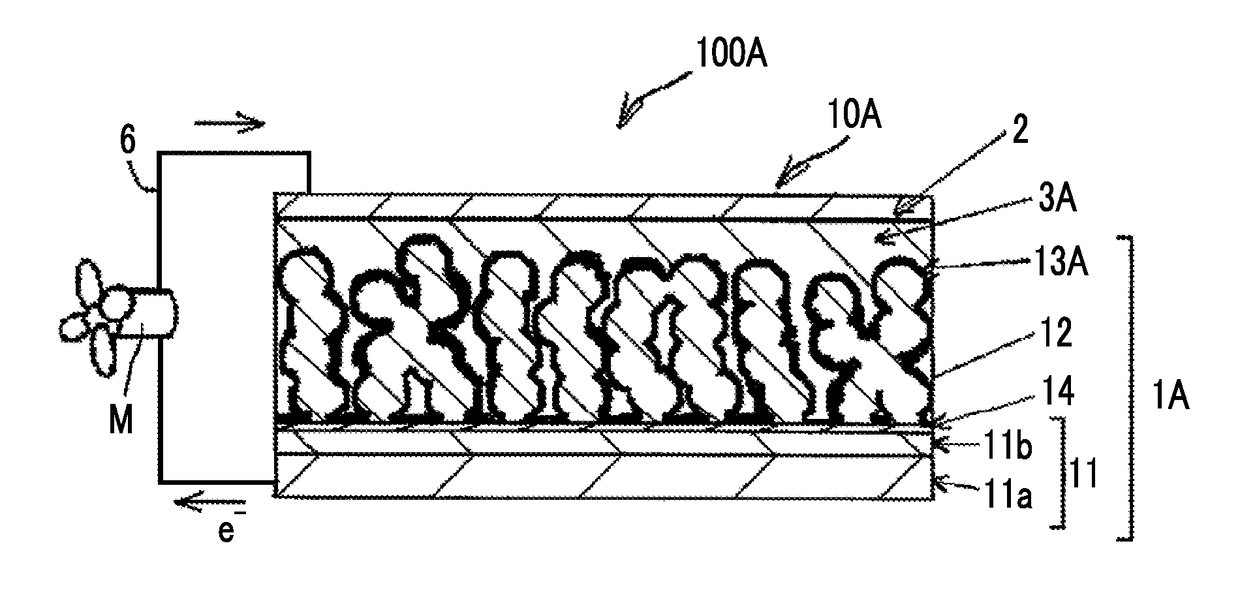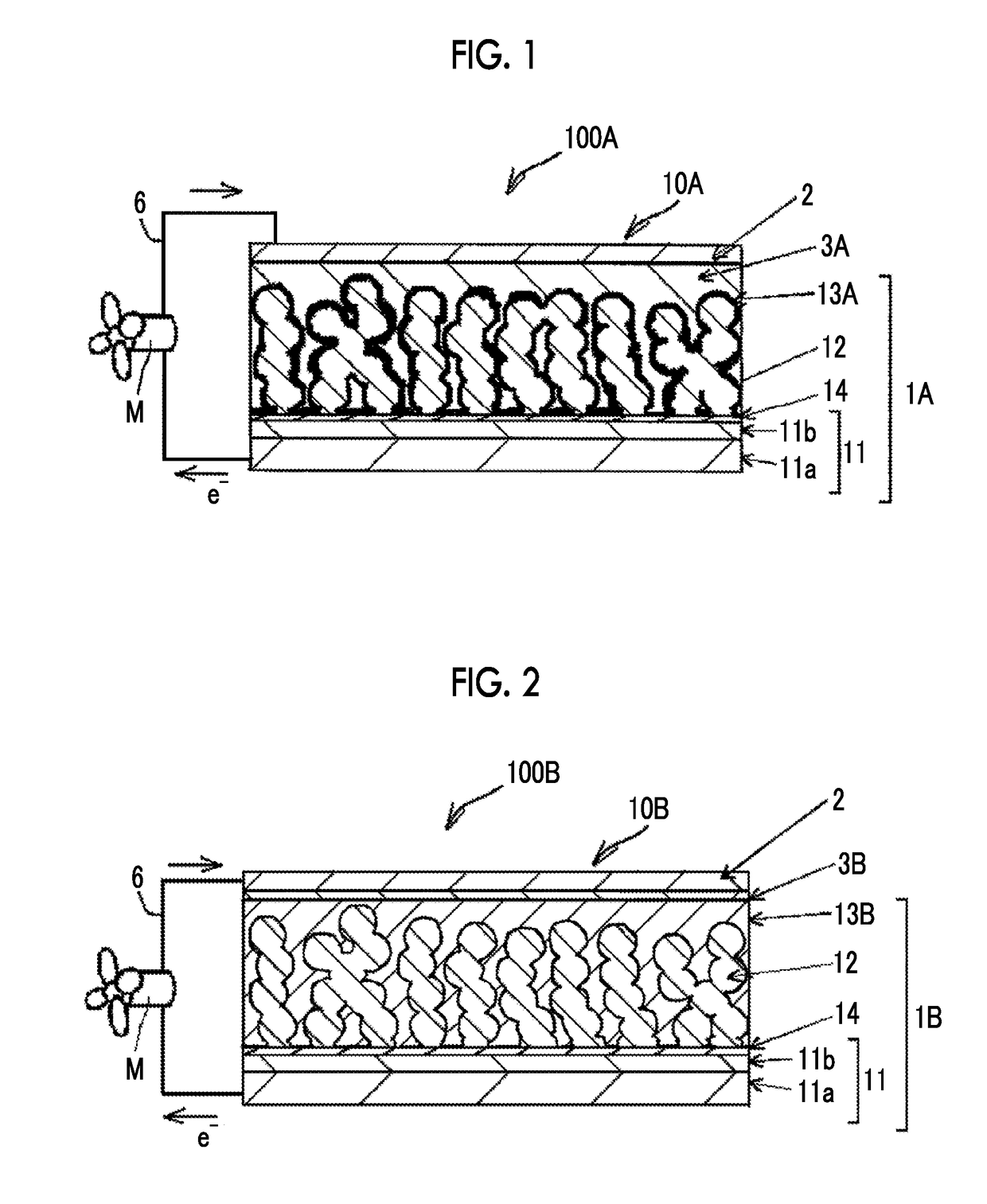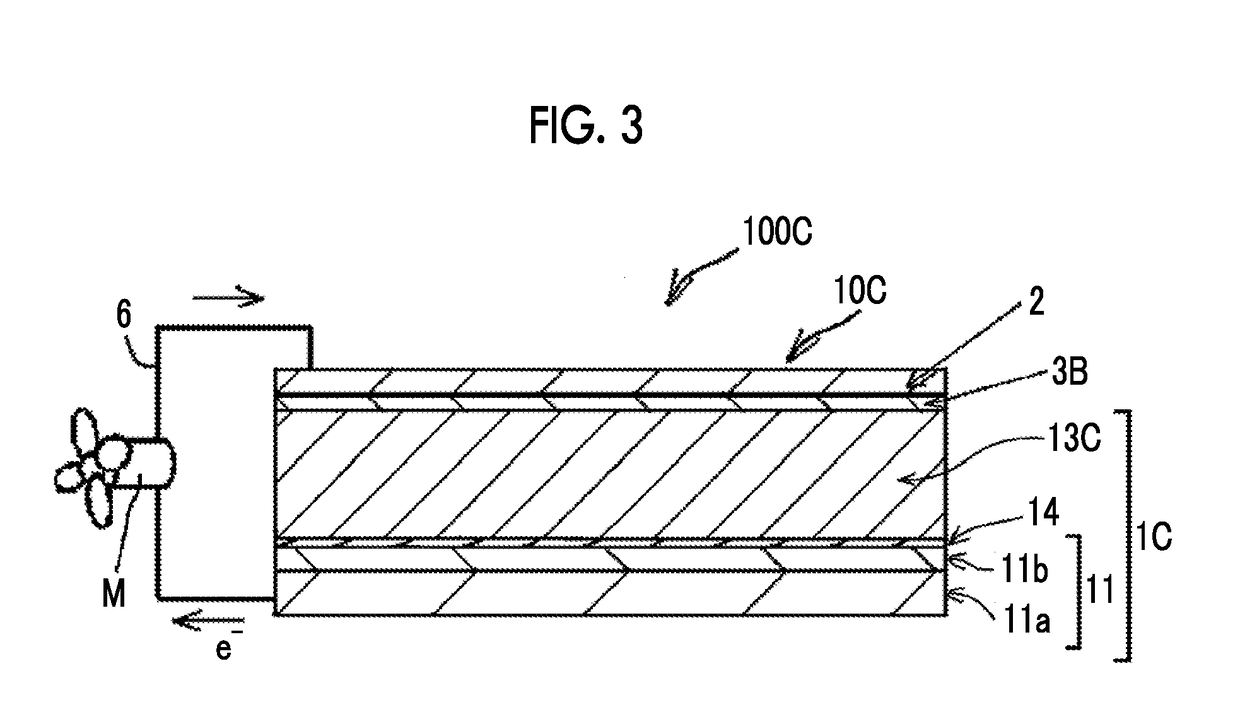Photoelectric conversion element, solar cell, and method for manufacturing photoelectric conversion element
- Summary
- Abstract
- Description
- Claims
- Application Information
AI Technical Summary
Benefits of technology
Problems solved by technology
Method used
Image
Examples
example 1
[0261](Manufacturing of Photoelectric Conversion Element (Specimen No. 101))
[0262]The photoelectric conversion element 10A illustrated in FIG. 1 were manufactured in an order described below.
[0263]11>
[0264]A fluorine-doped SnO2 conductive film (the transparent electrode 11b, film thickness: 0.3 μm) was formed on a glass substrate (the support 11a, thickness: 2.2 mm, 25 mm×25 mm), thereby producing a conductive support 11.
[0265]
[0266]An isopropanol solution containing 15% by mass of titanium diisopropoxide bis(acetylacetonate) (manufactured by Sigma-Aldrich Japan K.K.) was diluted with 1-butanol, thereby preparing 0.02 M of a solution for a blocking layer.
[0267]14>
[0268]A blocking layer 14 made of titanium oxide (having a film thickness of 100 nm) was formed on the SnO2 conductive film using 0.02 M of the solution for the blocking layer at 450° C. by means of a spray thermal decomposition method.
[0269]
[0270]Ethyl cellulose, lauric acid, and terpineol were added to an ethanol dispersi...
example 2
[0326]Photoelectric conversion elements 10A were manufactured in the same manner as in the manufacturing of the photoelectric conversion element of Example 1 except for the fact that, in the manufacturing of the photoelectric conversion element of Example 1, a light absorber solution prepared by changing the molar ratio between CH3NH3I and PbI2 to 3:1 was used. The obtained perovskite compound included (CH3NH3)2PbI4. As a result of evaluating the obtained photoelectric conversion elements by means of Tests 1 to 3 in the same manner as in Example 1, all of the photoelectric conversion elements obtained excellent results in the same manner as the respective conversion elements of Specimen Nos. 101 to 127.
[0327]The present invention has been described together with embodiments thereof, but the present inventors do not limit the present invention in any detailed part of the description unless particularly otherwise described and consider that the present invention is supposed to be wide...
PUM
 Login to View More
Login to View More Abstract
Description
Claims
Application Information
 Login to View More
Login to View More - R&D
- Intellectual Property
- Life Sciences
- Materials
- Tech Scout
- Unparalleled Data Quality
- Higher Quality Content
- 60% Fewer Hallucinations
Browse by: Latest US Patents, China's latest patents, Technical Efficacy Thesaurus, Application Domain, Technology Topic, Popular Technical Reports.
© 2025 PatSnap. All rights reserved.Legal|Privacy policy|Modern Slavery Act Transparency Statement|Sitemap|About US| Contact US: help@patsnap.com



